3rd Joint Laboratory Seminar on Rehabilitation Engineering and Assistive Technology, September 21, 2022
Information
3rd Joint Laboratory Seminar on Rehabilitation Engineering and Assistive Technology
Neural Electronic Engineering Laboratory
Division of Biomedical Engineering for Health and Welfare Graduate School of Biomedical Engineering
Tohoku University Sendai, Japan
Biocybernetics Laboratory
Department of Biomedical Engineering
Institut Teknologi Sepuluh Nopember (ITS)
Surabaya, Indonesia
Schedule:
Date: September 21, 2022
Time: 13.00 Surabaya /15.00 Sendai
Venue: Online (Zoom Meeting)
Presentation list:
Shungo Iguchi, Takashi Watanabe
A Basic study on Feedback Error Learning Functional Electrical Stimulation (FEL- FES) System for Daily Use: A Proof of Concept of a Method Using Musculoskeletal Model
Ahmad Tri Adi, Achmad Arifin, Josaphat Pramudijanto, Takashi Watanabe
A Wearable Functional Electrical Stimulation (FES) System for Elbow and Shoulder Joint Movements Restoration with Trajectory Based Fuzzy Control Method
Fauzan Arrofiqi, Takashi Watanabe, Achmad Arifin
A Validation Test of MPC-FES Controller Capability in Controlling Wrist Joint Movement of Paralyzed Patient Through Computer Simulation
Dwisainstia Aponno, Achmad Arifin, Mohammad Nuh, Muhammad Hilman Fatoni, Takashi Watanabe
Design of Multi-Sensor Gloves System for Assistive Interpreter of Indonesia Sign Language for Hearing and Speech Impaired Person
A Basic study on Feedback Error Learning Functional Electrical Stimulation (FEL-FES) System for Daily Use: A Proof of Concept of a Method Using Musculoskeletal Model
Shungo Iguchi, Takashi Watanabe
Graduate School of Biomedical Engineering, Tohoku University, Japan
Functional Electrical Stimulation (FES) is a useful technique to restore functional movement of limbs paralyzed by cerebrovascular disease. For using FES in daily life, it is needed to develop the controller that enables to control desired movements at a functionally sufficient speed and does not require time-consuming parameter tuning. In this study, in order to realize such FES controller, the Feedback Error Learning based FES (FEL-FES) controller was adopted and using a musculoskeletal model in the learning was tested. The musculoskeletal model composed of a statics part and a dynamics part. The statics part is constructed by interpolation of measured ramp stimulation responses, and the dynamics part is constructed by approximating measured step stimulation response with a 2nd order transfer function. A PID controller was used as a feedback controller. In model simulation, the control error decreased in learning and learned FEL-FES controller was able to track the untrained movement trajectories with a small tracking error. Experimental result with a healthy subject showed that the trained controller was able to track the target movement as well as model simulation result. This suggests that the learning for the FEL-FES controller through model simulation would be useful. However, the controller trained with a musculoskeletal model developed by using data measured on a different day was not able to track target movement properly, and the control ability would depend on PID controller. This result indicates that it needs the easy methods to adjust the model when musculoskeletal characteristics changed or to adjust the parameters of the PID controller in a simple procedure.
Wearable Functional Electrical Stimulation (FES) System for Elbow and Shoulder Joint Movements Restoration with Trajectory Based Fuzzy Control Method
Ahmad Tri Adi, Achmad Arifin, Josaphat Pramudijanto, Takashi Watanabe*
Department of Biomedical Engineering, Institut Teknologi Sepuluh Nopember, Indonesia
* Graduate School of Biomedical Engineering, Tohoku University, Japan
This study concerned with control system of upper limb movement restoration for hemiplegic subjects. Wearable movement sensors for elbow and shoulder joints and electrical simulator have been developed. The movement sensors were based on fusion of low-cost inertial sensors, gyroscope ENC03 and analogue accelerometer ADXL335 with Kalman filtering. The electrical stimulator consisted of boost converter and pulse generator circuits. Pulse generator circuit produced pulses of 20 Hz frequency with 230 µs pulse width. Effective muscle contraction was resulted in 10% duty cycle of 15 kHz PWM input for boost converter circuit that produced 40 Volt stimulation intensity without pain. Trajectory based movement control has been realized on an embedded fuzzy controller for controlling stimulation intensity of flexor muscle of elbow and shoulder joints. Closed- loop control performance has been tested with six normal subjects who have been trained in simulating paralyzed subjects. RMSE were 14.60° and 6.85° for elbow joint and shoulder joint, respectively. Improvements of the control performance can be reached by optimizing fuzzy membership function. Overall system also can be further validated on paralyzed subjects or patients with hemiplegia with the appropriate protocol. Furthermore, the designed system would be integrating in a telerehabilitation system.
A Validation Test of MPC-FES Controller Capability in Controlling Wrist Joint Movement of Paralyzed Patient Through Computer Simulation
Fauzan Arrofiqi*, Takashi Watanabe*, Achmad Arifin**
* Graduate School of Biomedical Engineering, Tohoku University, Japan
** Department of Biomedical Engineering, Institut Teknologi Sepuluh Nopember, Indonesia
In our previous computer simulation study, a functional electrical stimulation (FES) controller based on model predictive control (MPC) with simplified parameter estimation was developed and tested in wrist joint control. The developed MPC-FES controller had a high tracking control capability and the parameter estimation method was effective in determining the controller parameter for a new user. However, the MPC-FES controller was only tested in controlling the wrist joint movement of normal subject models. The purpose of this study was to validate the tracking control capability of the MPC-FES controller in controlling the wrist joint movement of the paralyzed subject model through computer simulation. The paralyzed subject model was developed to have a similar input- output characteristic of the stimulated muscle of a real hemiplegic patient. The evaluation results showed that the MPC-FES controller had a good tracking control capability in controlling the wrist joint movement of the paralyzed subject model which was superior compared to the fuzzy-FES controller. Based on this validation test result, the MPC-FES controller with its parameter estimation method was considered to be capable and useful for practical FES application. It is considered that a study on how to deal with stronger nonlinear characteristics is necessary.
Design of Multi-Sensor Gloves System for Assistive Interpreter of Indonesia Sign Language for Hearing and Speech Impaired Person
Dwisainstia Aponno, Achmad Arifin, Mohammad Nuh, Muhammad Hilman Fatoni, Takashi Watanabe*
Biomedical Engineering Department, Institut Teknologi Sepuluh Nopember, Surabaya, Indonesia
* Graduate School of Biomedical Engineering, Tohoku University, Sendai, Japan
Individuals with hearing and speech impairment have difficulties in verbal communication. Sign language is usually used in communication among individuals with hearing and speech impairment. Sign language is conveyed using finger and hand movements to express certain messages or gestures. However, common people do not fully understand sign language, so it is necessary to develop a sign language interpretation tool. In this study, an assistive system for Indonesian Sign Language Interpretation was developed to convert the Sign Language into alphabets. Multi-sensor glove consisted of flex sensors, pressure sensors, and digital angle module MPU6050. The specific code of each alphabet was designed based on patterns of finger position and hand movements. The dictionary for the classification was developed based on data from six subjects. Classification results were displayed to the user on their smartphone as text and voice. Accuracy of first experiment 83.7% for the SIBI alphabetical classification. By modification of dictionary in second experiment, the accuracy increased up to 94%. By employing a specific classification and by including more test data, this study’s expected outcome can be boosted. The results show that the apparatus may be used effectively as a speech and hearing aid for those who are deaf or hard of hearing.
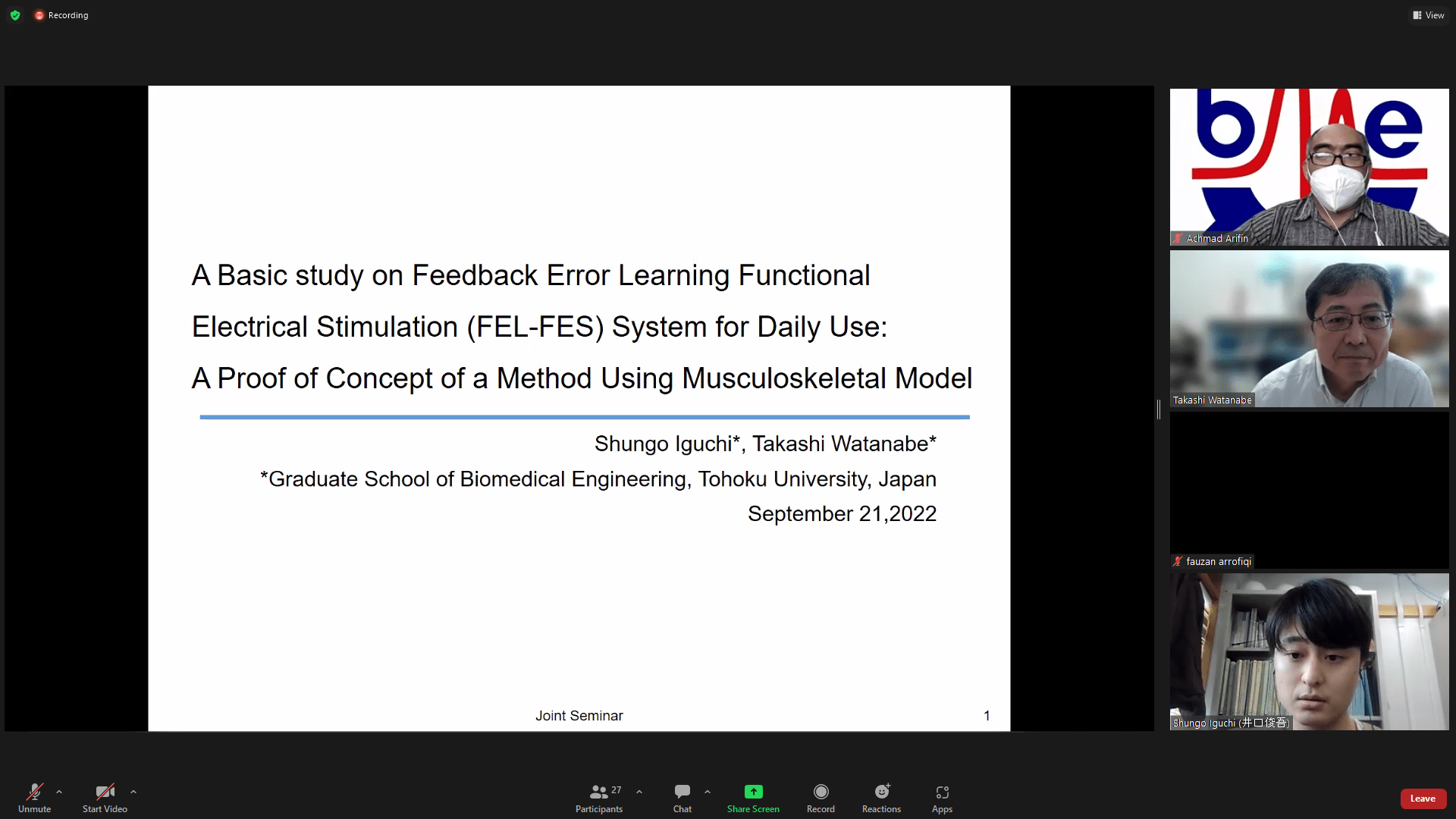
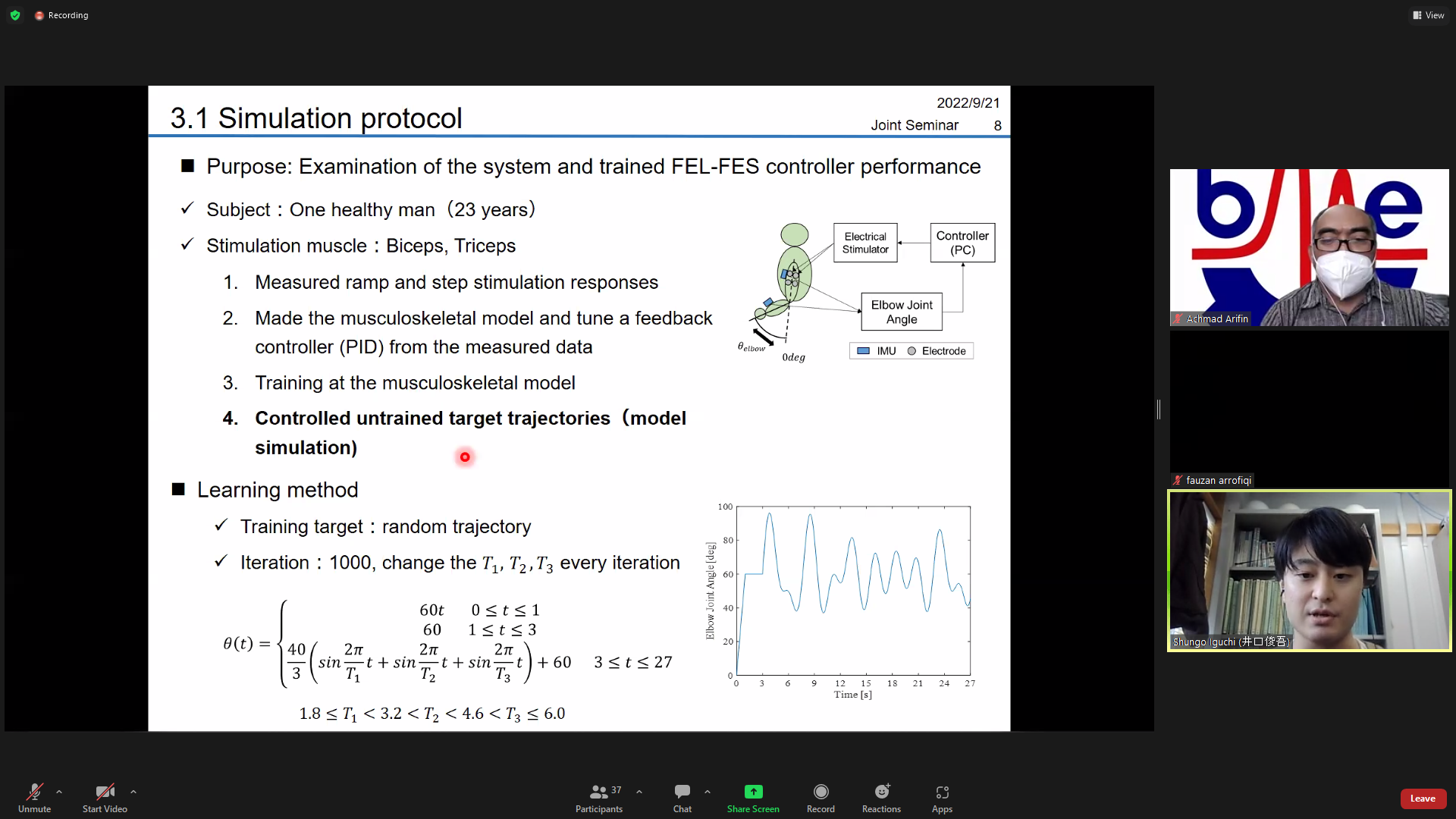
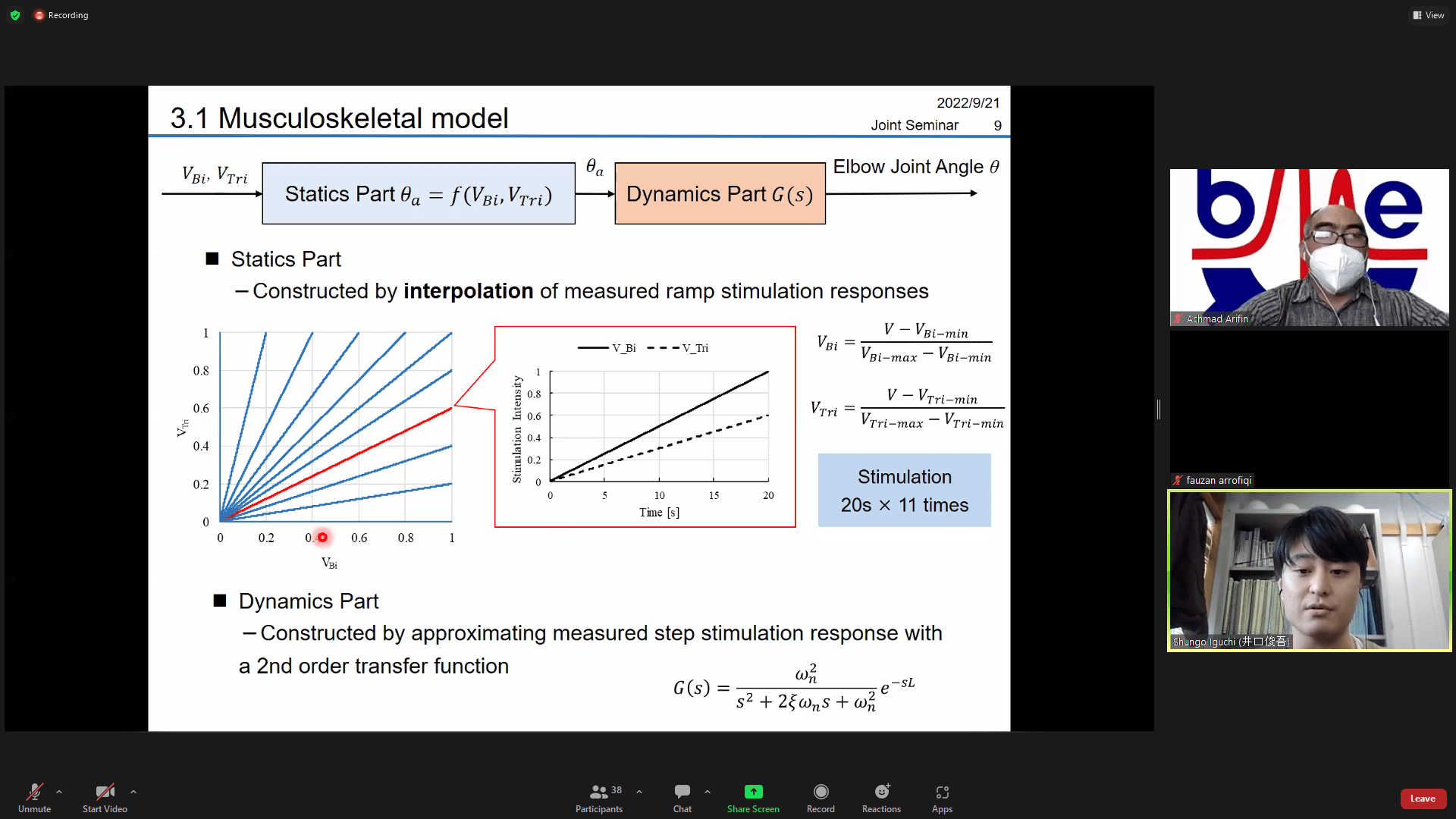
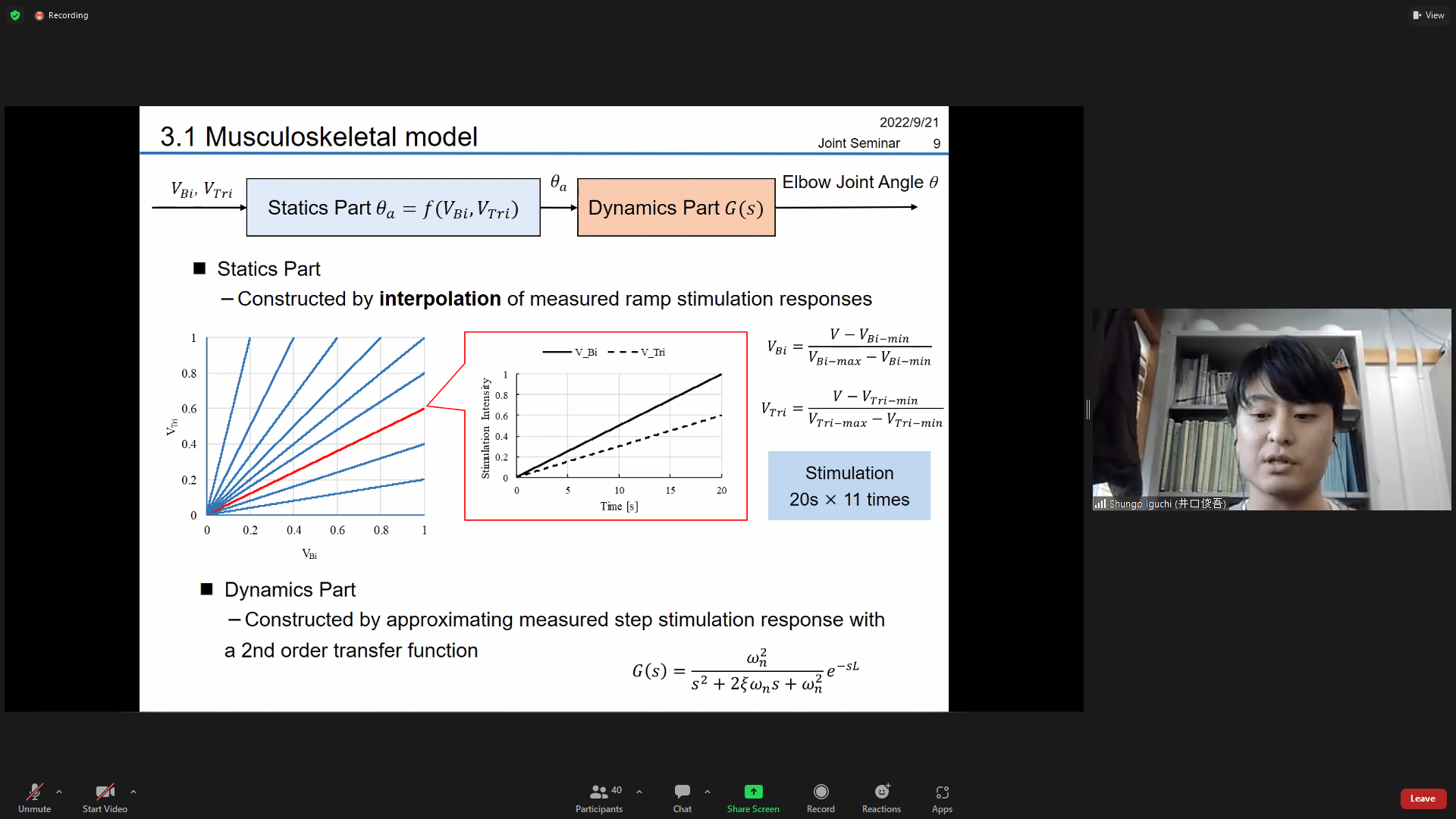
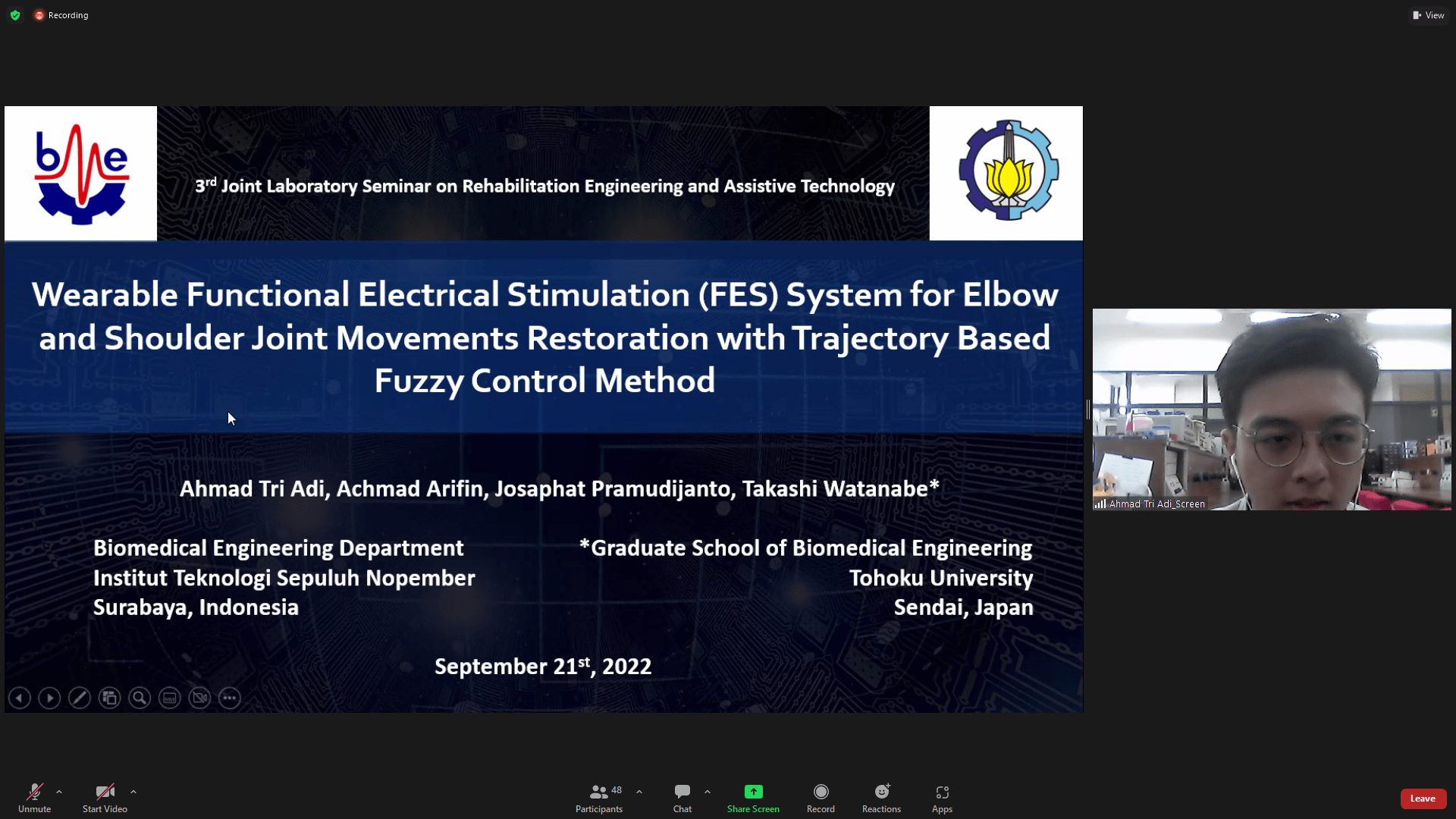
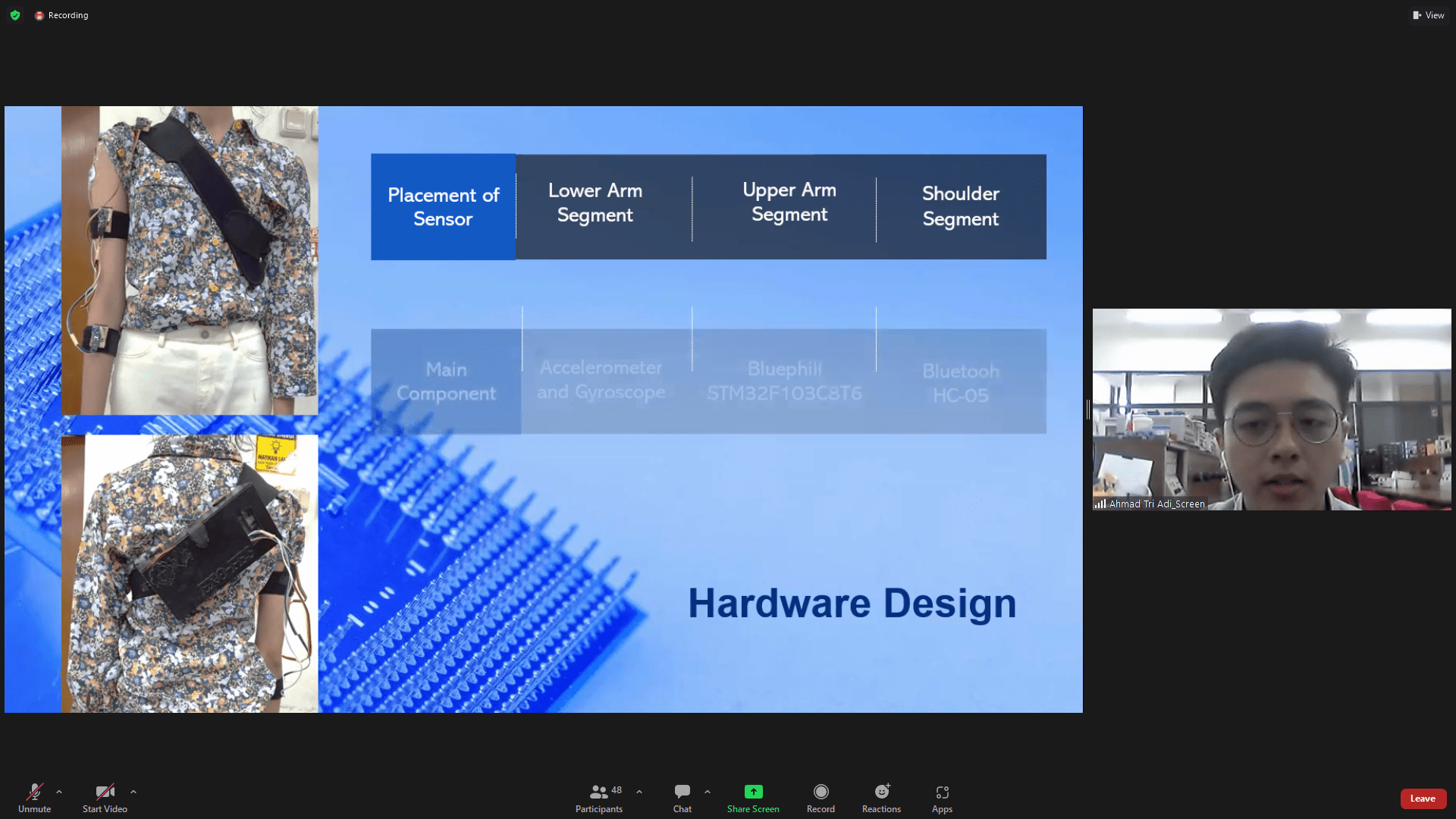
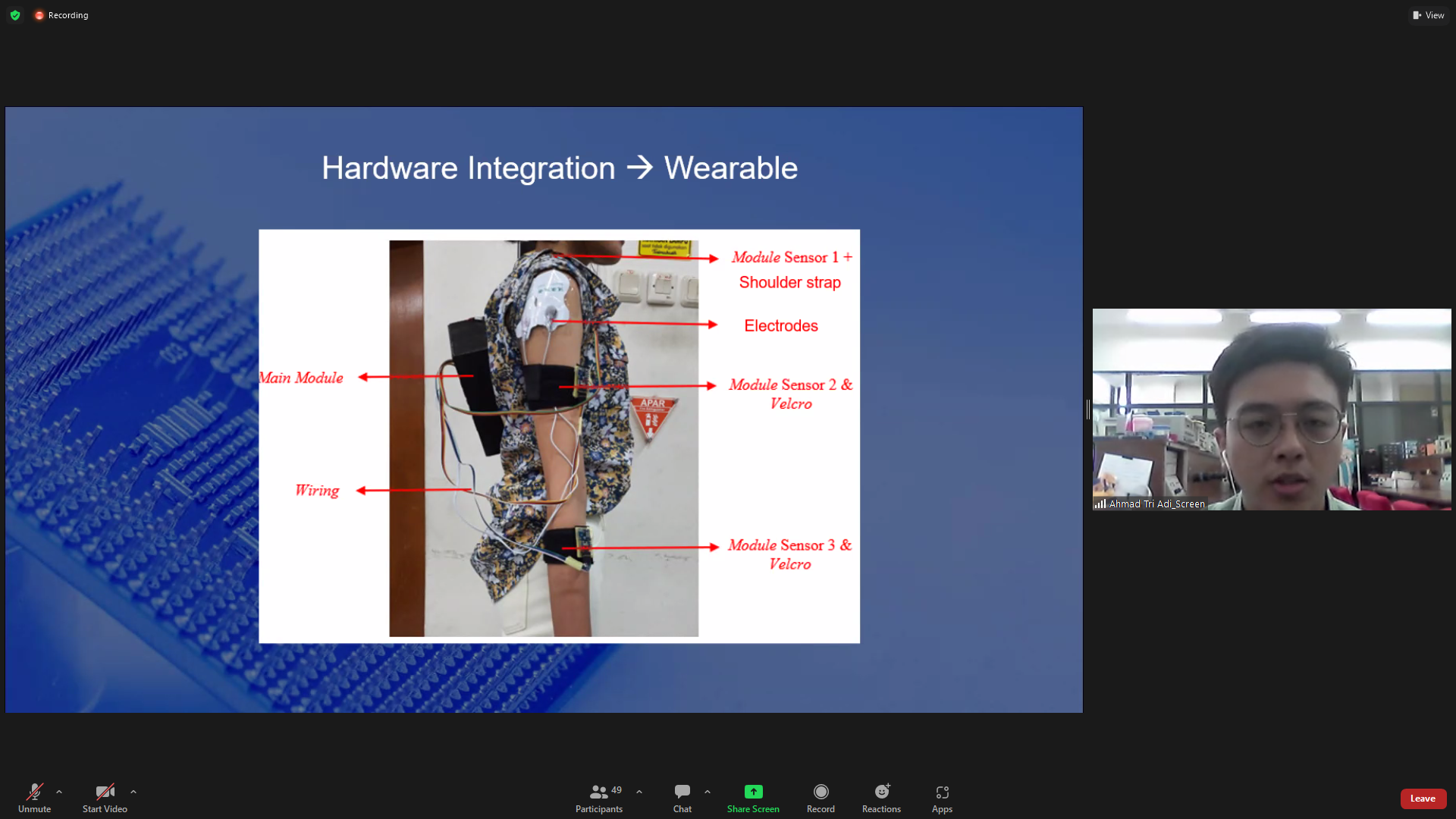
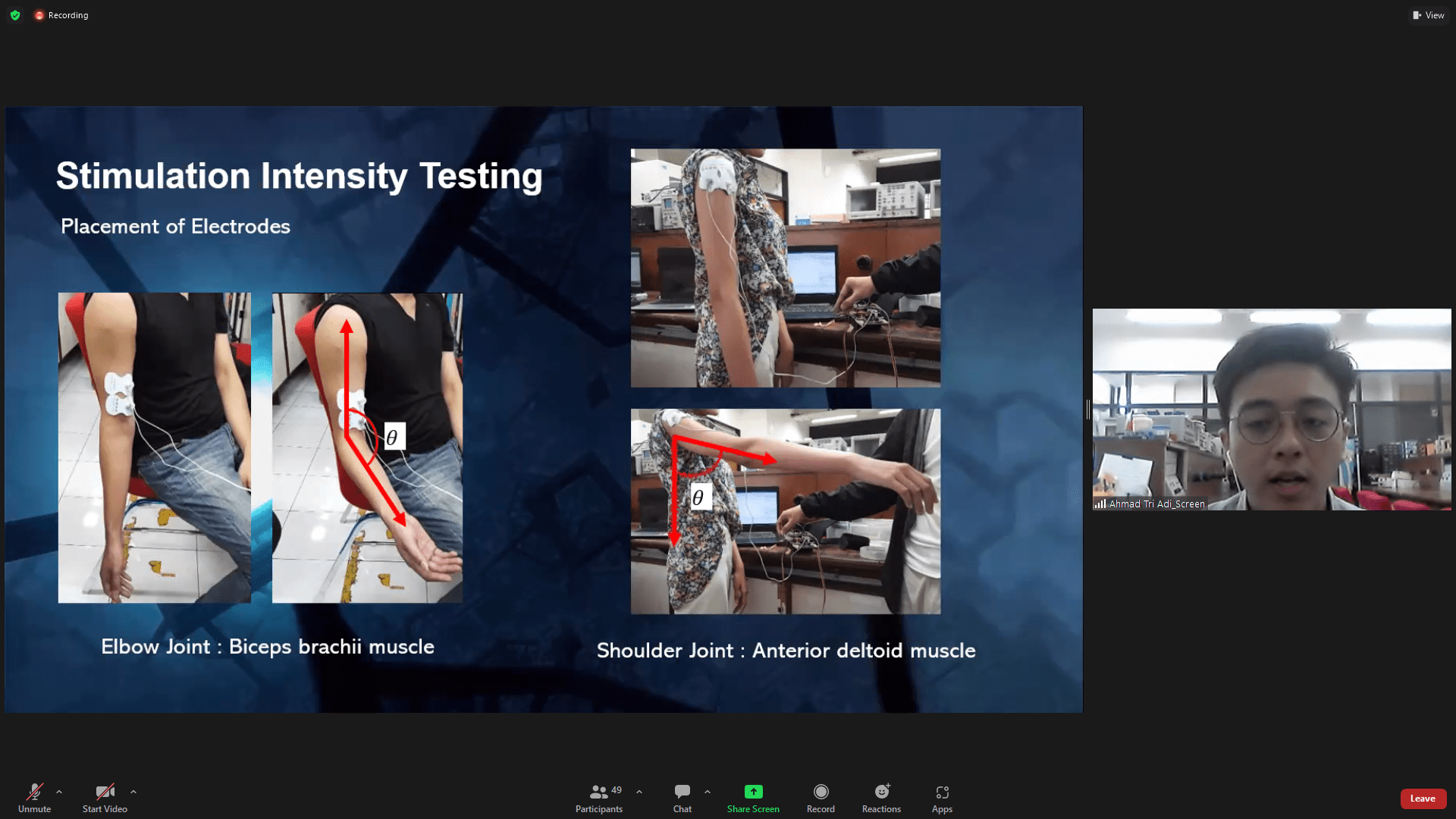
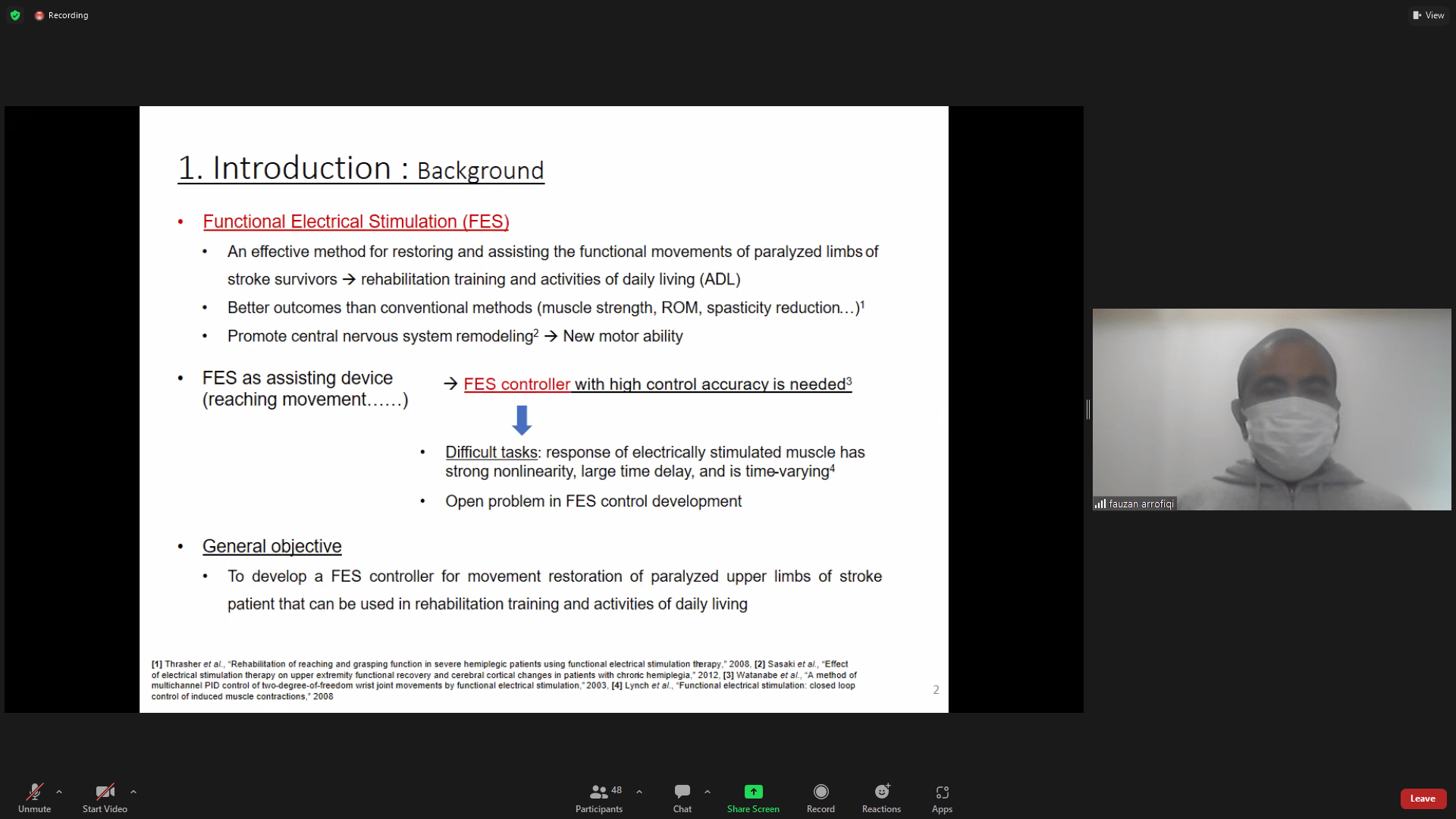
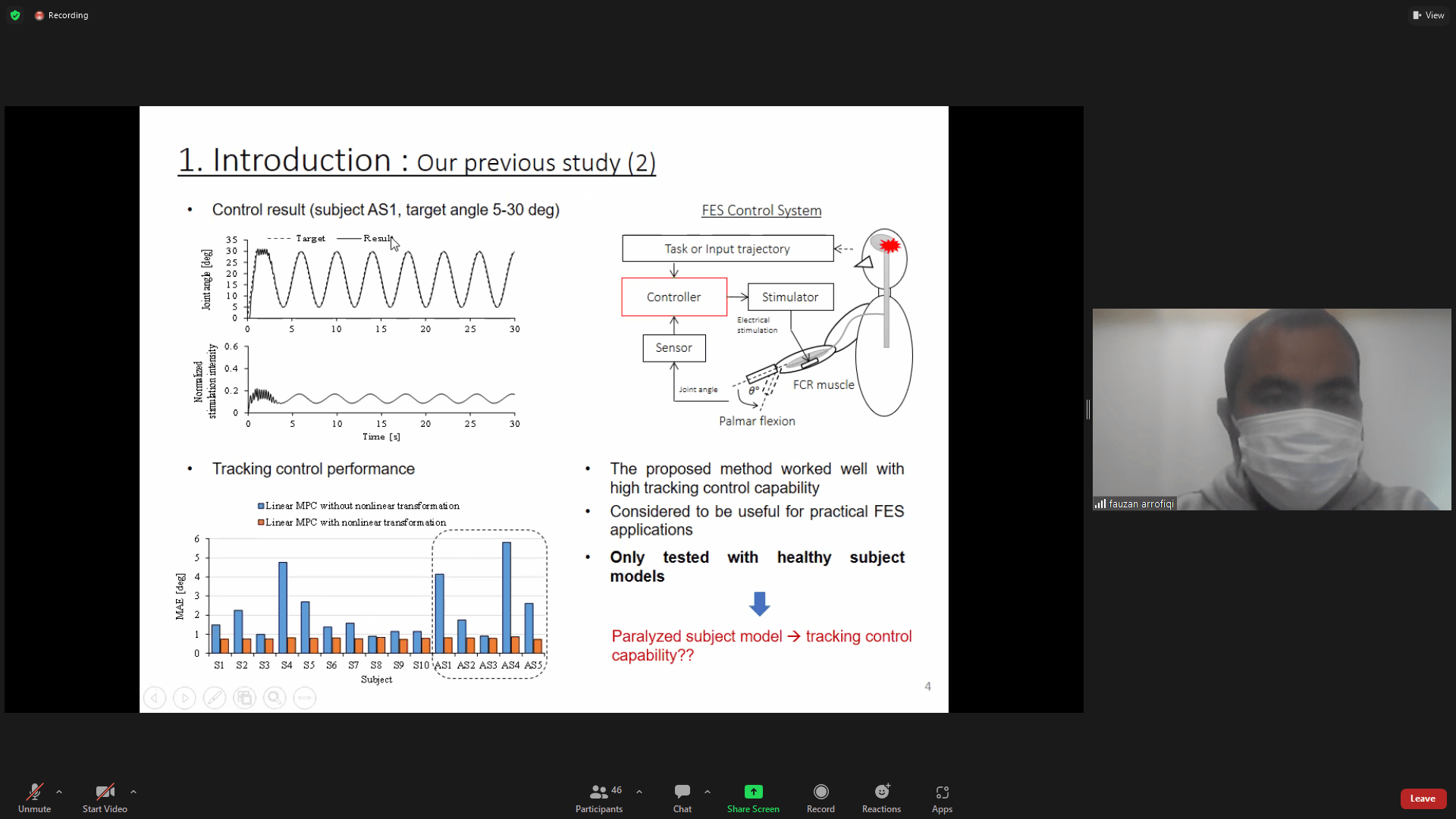
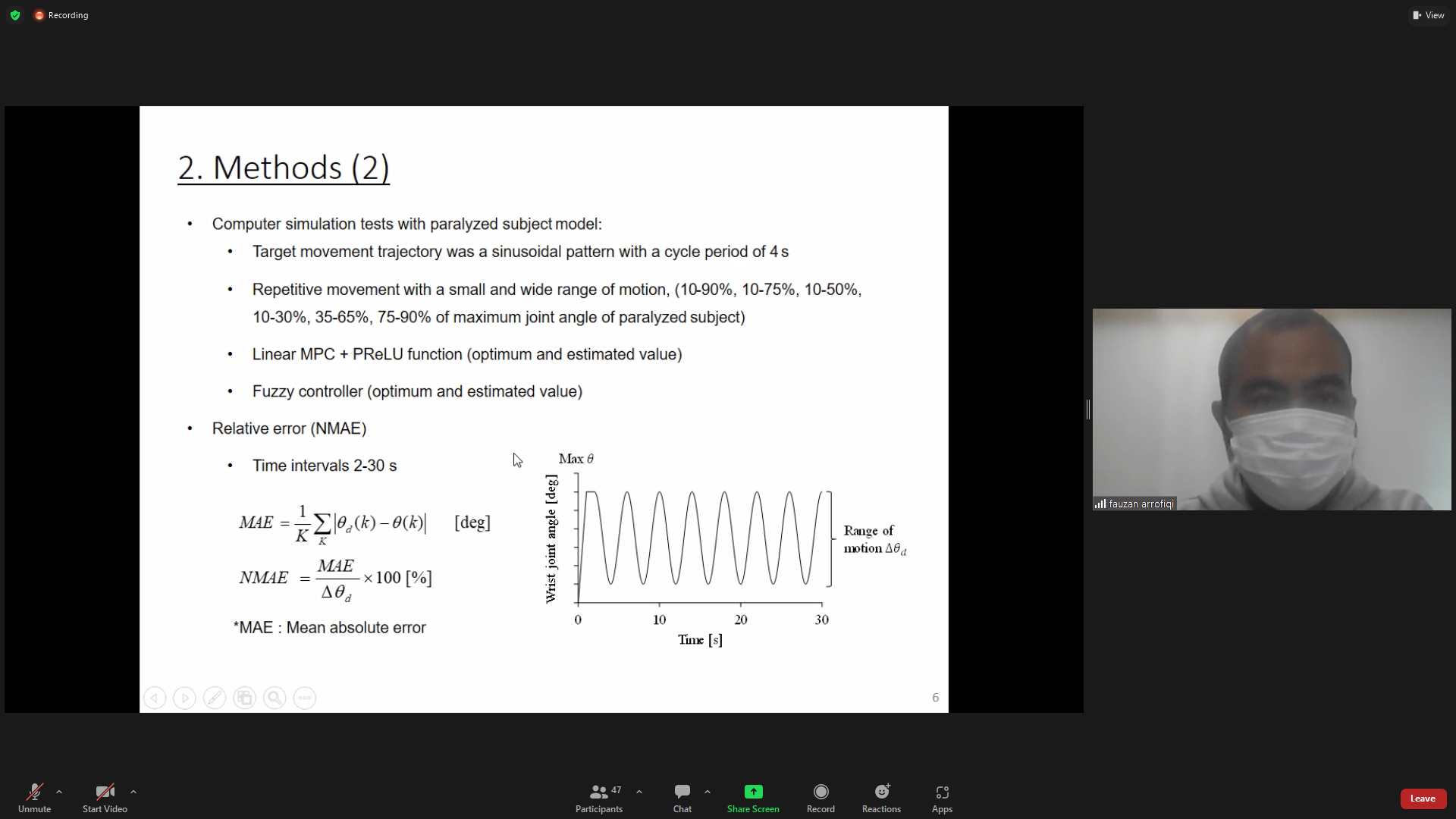
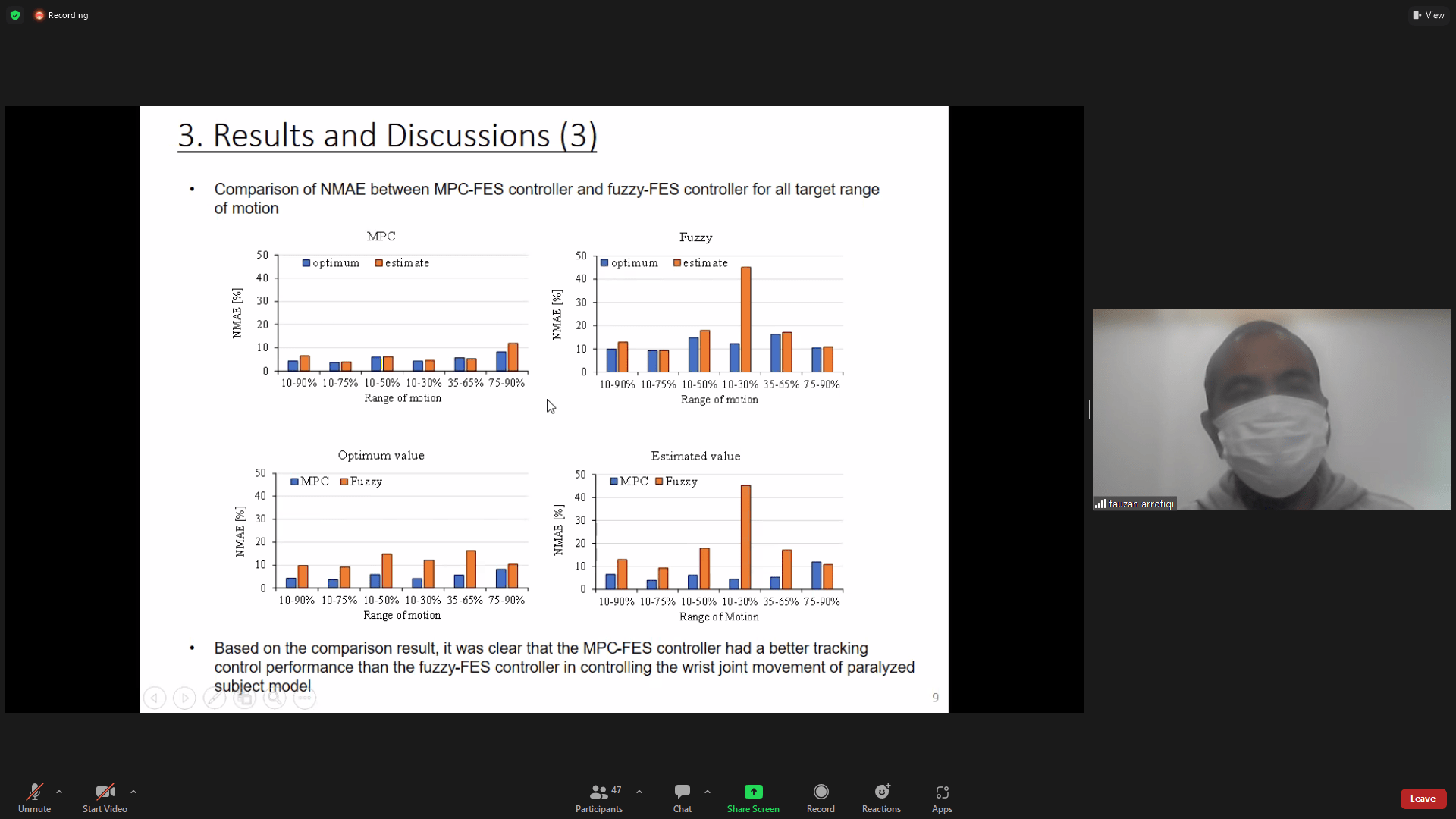
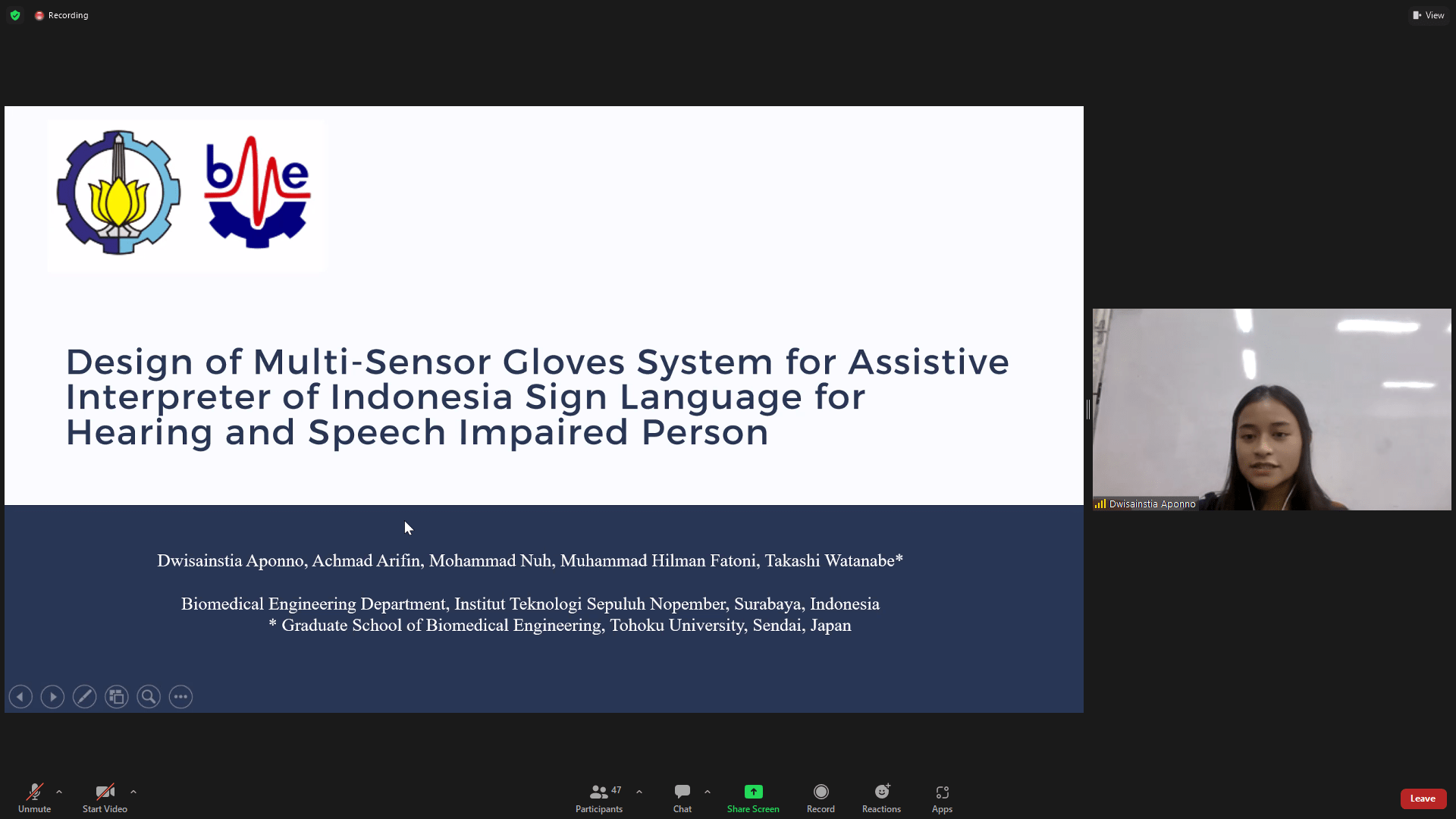
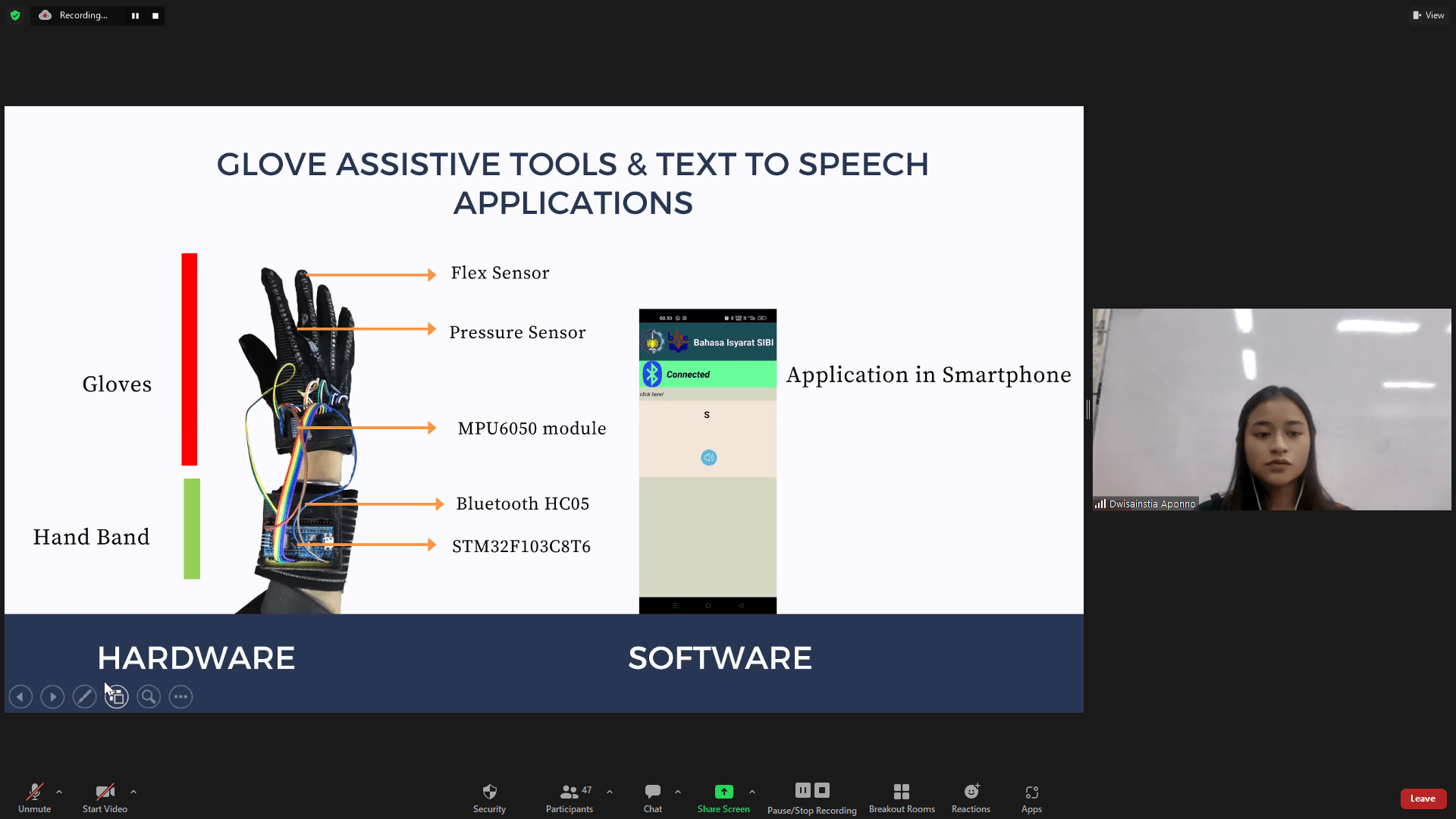
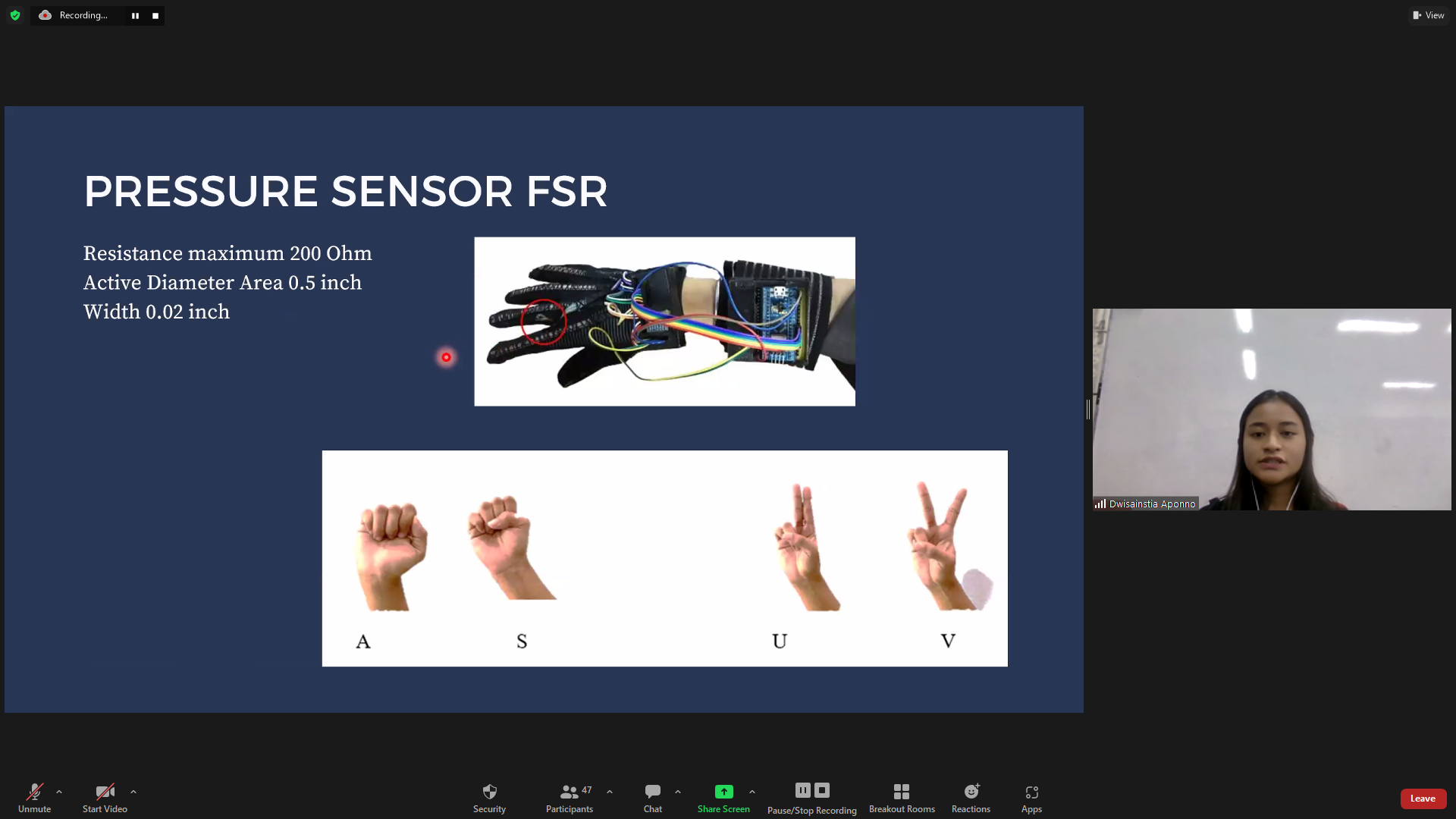
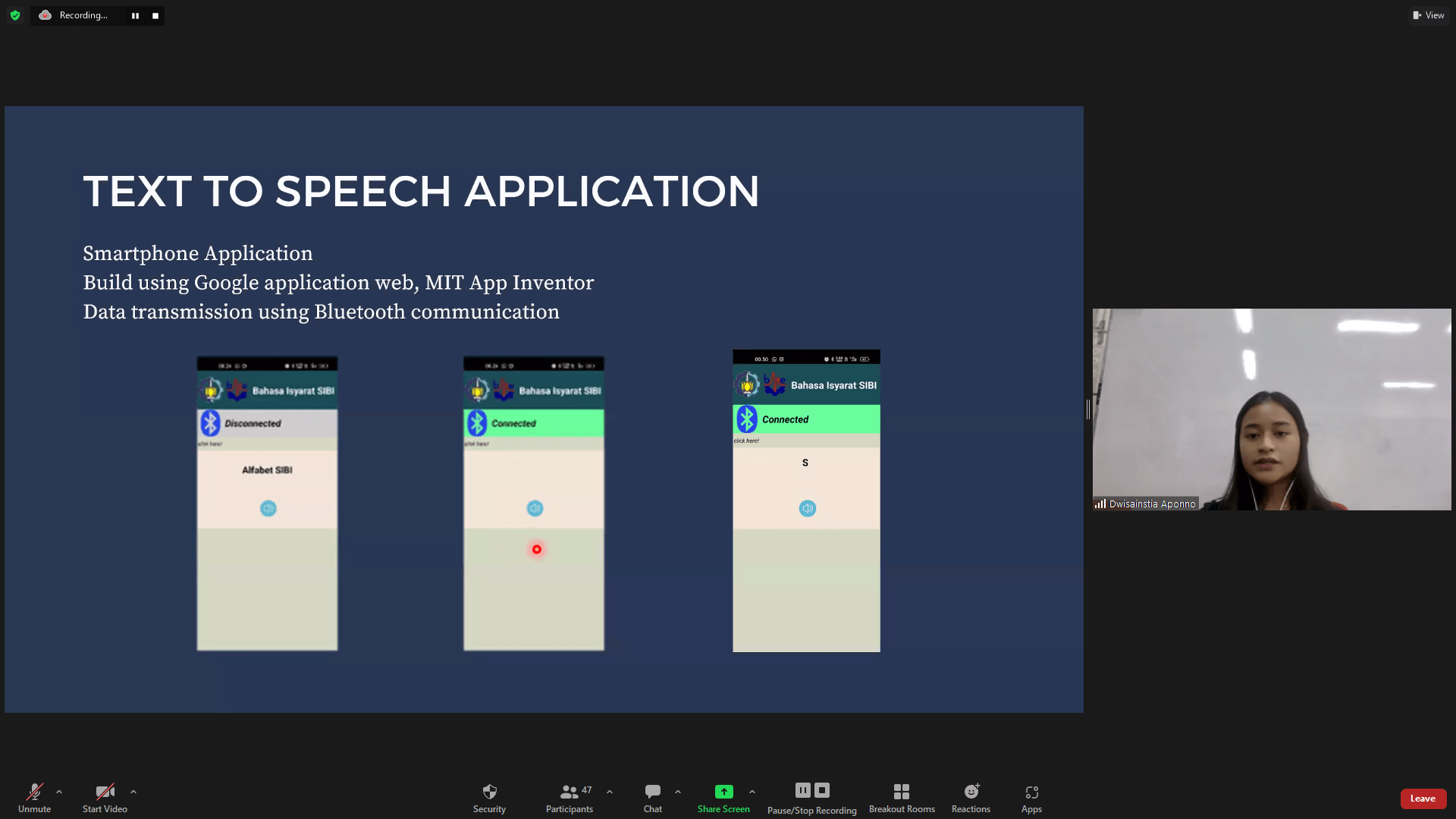
Latest News
-
4th Joint Laboratory Seminar on Rehabilitation Engineering and Assistive Technology, October 19, 2022
4th Joint Laboratory Seminar on Rehabilitation Engineering and Assistive Technology Neural Electronic Engineering Laboratory Division of Biomedical Engineering for
-
3rd Joint Laboratory Seminar on Rehabilitation Engineering and Assistive Technology, September 21, 2022
3rd Joint Laboratory Seminar on Rehabilitation Engineering and Assistive Technology Neural Electronic Engineering Laboratory Division of Biomedical Engineering for
-
Policy of Development on Rehabilitation Engineering, April 30, 2022
National and Institutional Policies of Rehabilitation Indonesian Government all Indonesian Citizens and Residences as a mandate of the





